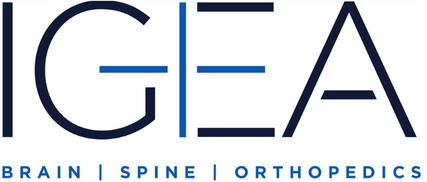CAVERNOUS MALFORMATION TREATMENT IN NEW JERSEY AND NEW YORK
IGEA Brain, Spine & Orthopedics is home to an award-winning team of neurosurgeons and neurology specialists. From our convenient, state-of-the-art offices in New Jersey and New York, we serve the entire tri-state area with the diagnosis and treatment of various neurovascular conditions, including cavernous malformations.
UNDERSTANDING CAVERNOUS MALFORMATIONS
The brain and spine share a complex, intertwined network of tiny blood vessels that are responsible for supplying oxygen and nutrients to the entire body. Occasionally, a group of these vessels will become enlarged, which is a condition called a cavernous malformation. These resemble a mulberry and can be anywhere from two millimeters to several centimeters in diameter. As they grow, their walls become thin, brittle, and prone to leaking or hemorrhaging (bleeding).
Medical research has not yet identified any clear causes for cavernous malformations, and many cases develop without an apparent reason. Some malformations are hereditary, however, with about 20% of patients having at least one family member who was similarly affected. The inherited form may cause multiple malformations over the course of an individual’s lifetime. This can be diagnosed and confirmed through genetic testing.
SIGNS AND SYMPTOMS
Cavernous malformations do not always cause apparent symptoms. Medical reports suggest about 25% of patients will never notice a related problem. Others, meanwhile, experience harsh symptoms. Depending on where the malformation is located, patients may experience:
- Sudden, severe headaches
- Nausea and vomiting
- Numbness or weakness on one side of the body
- Issues with speech, comprehension, and hearing
- Vision changes, including double vision and vision loss
- Balance difficulties
- Seizures
- Paralysis
Symptoms worsen if the malformation begins to hemorrhage. Recurrent bleeding causes progressively worse neurological issues until the malformation is addressed by a specialist. If you or a loved one experiences any of these symptoms, seek medical help immediately.
AVAILABLE TREATMENTS IN NJ AND NY
Mild symptoms can often be treated using conservative methods such as antiepileptic medications, which may reduce seizures. Meanwhile, our neurosurgeons and neurologists closely monitor the malformation for growth or hemorrhage. For many patients, however, surgery is eventually necessary to provide greater relief. IGEA Brain, Spine & Orthopedics offers advanced surgical options to treat cavernous malformations, including:
- Microsurgical resection: If the malformation can be easily reached, our surgeon can gently separate and remove it from the surrounding nervous tissue.
- Radiosurgery: This involves precise radiation beams delivered directly to the affected area, burning and sealing off the malformation without requiring an incision.
Your eligibility for surgery depends on your medical history, the results of a physical exam, and whether your malformation is accessible. All procedures can be conducted in a minimally invasive manner, allowing our neurosurgeons to reduce your recovery time and avoid unnecessary scarring.
SEEK TREATMENT WITH OUR SPECIALISTS NOW
To seek an accurate diagnosis for your symptoms and begin an effective treatment plan for a cavernous malformation, contact IGEA Brain, Spine & Orthopedics to schedule an appointment. Our award-winning team serves the tri-state area with facilities conveniently located in New Jersey and New York.

